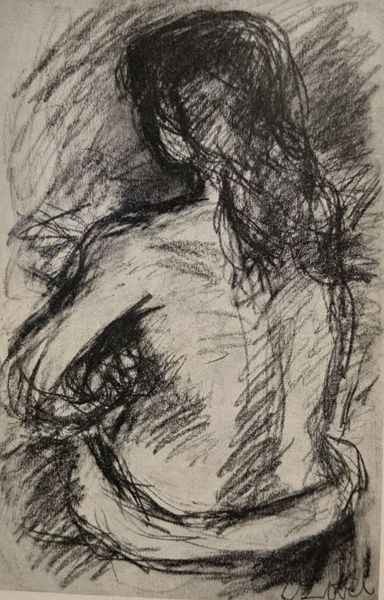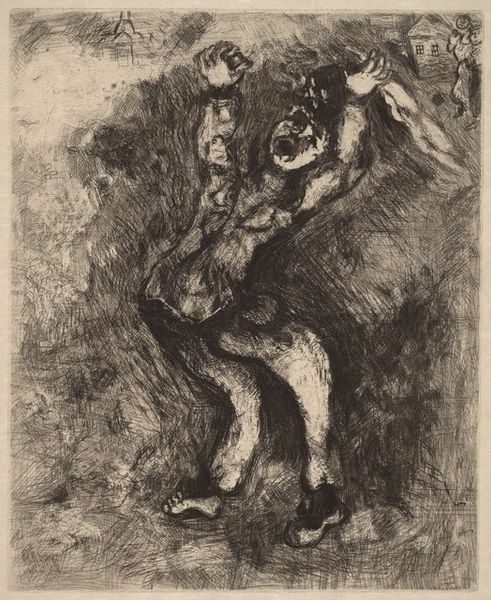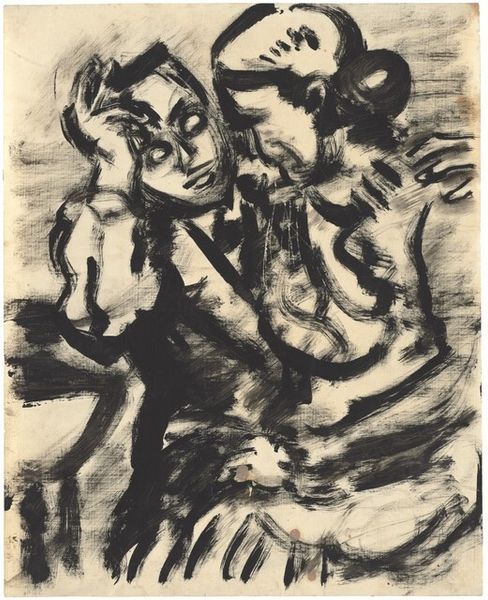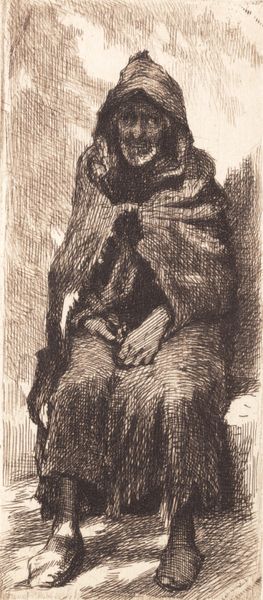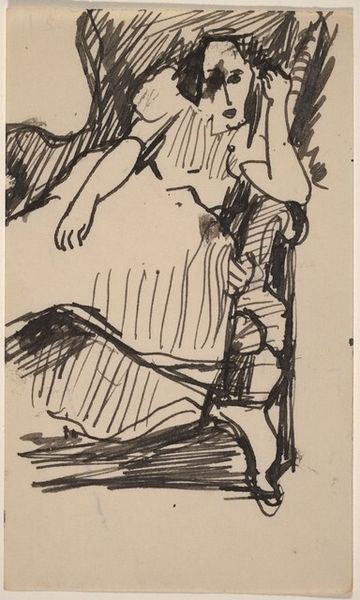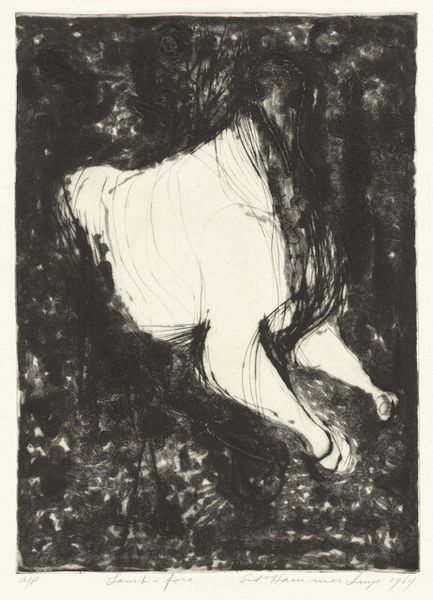
drawing
#
drawing
#
amateur sketch
#
quirky sketch
#
pen sketch
#
incomplete sketchy
#
linework heavy
#
idea generation sketch
#
sketchwork
#
pen-ink sketch
#
fantasy sketch
#
initial sketch
Copyright: Public Domain: Artvee
Editor: We’re looking at “Statue of an Amazon at the Alte Museum,” a 1916 drawing by Lovis Corinth. The sketchy linework almost makes it feel unfinished, like a fleeting glimpse. What strikes you about it? Curator: Oh, the rawness is the point, I think! Corinth’s wrestling with form here, you see? It’s not about a perfect likeness. Look how the lines vibrate around the figure. It’s like he’s trying to capture the *energy* of the statue, its inherent power frozen in stone but bursting to be freed. Do you feel that tension? Editor: Definitely! It’s not a delicate rendering, it's almost violent in its intensity. What's the story *behind* choosing that specific statue? Curator: Good question. I think for Corinth, the Amazon might've represented a potent mix of things: the classical world, which he adored; feminine strength, a subject that clearly fascinated him; and perhaps even a mirror to his own internal struggles as an artist facing the horrors of World War I. What do you read into that gesture of her raised arm? Victory? Defiance? Editor: I see defiance, for sure. There's almost a modern feel, thinking about the time it was made... that fits. Curator: Yes, it’s like a premonition of the chaos engulfing Europe. The sketch isn’t just about a statue; it’s about a world on the brink. I wonder, do the rushed lines, the near abstraction of form, speak more clearly than a highly polished academic drawing could? Editor: That makes sense. I was stuck on thinking it was unfinished, but seeing it as a reaction to the world... It totally changes my view of the piece. Curator: That's the magic, isn't it? Art revealing itself in layers.
Comments
No comments
Be the first to comment and join the conversation on the ultimate creative platform.



